The Problem of Sewing with Adhesive
How adhesive and other sticky substances can interfere with loop creation and cause poor stitch quality
Recently, a woman came into our shop because her sewing machine was skipping stitches. I powered on her machine, inserted a fresh needle, and sewed quite a bit on some of our scrap fabric— no skipped stitches. She happily took the machine home, but returned the next day with the same problem. She said it was sewing perfect for about 15 minutes, but again began to skip stitches consistently. Again, I inserted a fresh needle and sewed on some our scrap fabric. Again, no skipped stitches. Again, she took the machine home, and again returned the next day with the exact same story: initially the machine was sewing perfect for a few minutes, but all of a sudden began skipping stitches.
I looked closely at the needle. It was the same new needle I personally inserted less than 24 hours ago, but there was a glaring problem: a ring of lint was stuck to the needle shaft. I felt the needle shaft with my finger— it was a little bit sticky.
“Have you been spraying your fabric with adhesive?”
“Yes I have.”
And therein lies our problem: if adhesive gets on the needle, it interferes with proper loop creation, rendering stitch formation impossible.
Loop Creation
As you sew, the needle goes down and the needle goes up, over and over again. As the needle the goes down, the upper thread that you’ve threaded through the needle eye is taut, sort of hugging up against the needle shaft.
When the needle goes down below the needle plate and reaches its bottom-most position— what sewing machine technicians call bottom dead center— the thread is still taught. However, as the needle begins its path upwards, a thread loop is formed just above the eye of the needle— it is no longer taut, no longer hugging up against the needle shaft (as seen in the photos below).
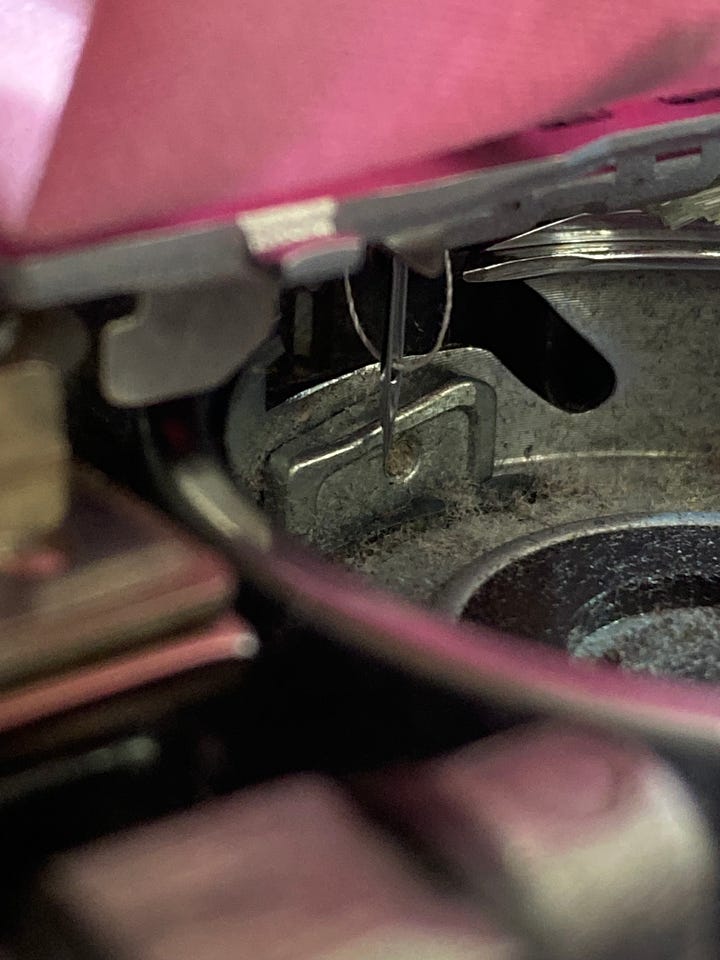
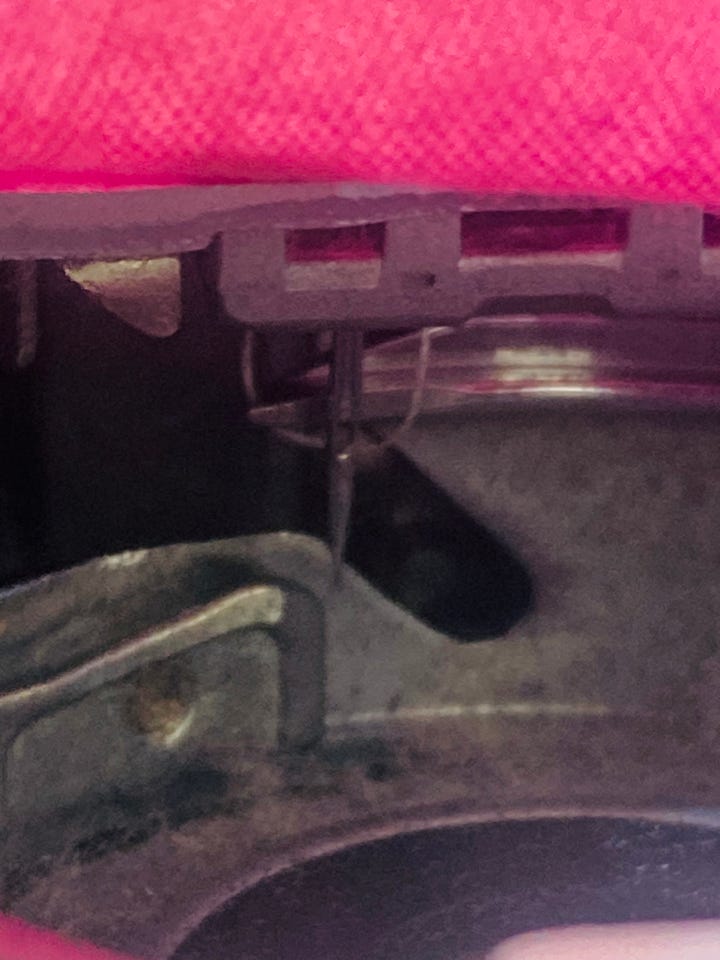
Just as this thread loop is formed, the hook point of the machine’s hook mechanism comes along and passes through thread loop. The hook point “catches” the thread loop and takes it along a 360 degree path around the bobbin case. While riding along this path, the upper thread forms a loose knot with the bobbin thread. Then, as the needle reaches its high point, the action of the take-up lever cinches the knot [formed below the needle plate] up into the fabric we are sewing. That, in short, is how a successful stitch is made.
In the video below, focus on the thread loop that forms above the needle eye, and how the hook point passes through the loop in order to make a stitch:
Why is adhesive problematic?
If your fabric is coated in excess adhesive, then there is a possibility the adhesive will adhere to the needle shaft when your needle pierces through the fabric, and this interferes with loop creation.
Think about it: the thread loop forms above the needle eye; the sewing hook passes through that loop. If the needle shaft is sticky, then the thread may get stuck on the shaft, distorting the shape of the thread loop, or preventing the loop from forming altogether. That’s when skipped stitches occur: if the hook doesn’t successfully pass through the thread loop, you will get a skipped stitch every single time.
Does this mean you can’t use adhesive at all?
I am not saying that you can’t use adhesive at all. However, from the perspective of a sewing machine technician, excessive adhesive often leads to skipped stitches, so I highly recommend you use the least amount of adhesive that you can get away with when you do use adhesive for a project.
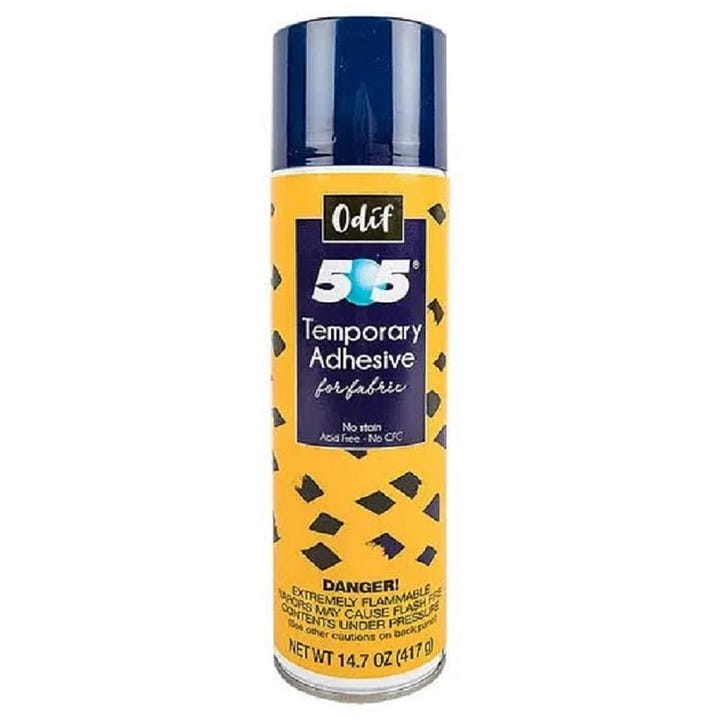

At my dad’s shop, we carry 505 Temporary Adhesive and Spray n Bond Basting Adhesive, both of which are pretty good in terms of not gumming up the needle.
A few miscellaneous notes before close:
Velcro
There is adhesive in Velcro. If you do so Velcro, there is a good chance your needle will get really sticky, so just be aware that you may have to change your needle a lot more than usual in order to finish a Velcro project.Adhesive on the Hook & Bobbin Case
If way way wayyyyyy too much adhesive is used, there is a chance that it can get down below the needle plate and coat the bobbin case, bobbin case basket, and/or sewing hook. If this happens, stitch quality will suffer and changing the needle won’t help. You will likely need to take the machine to a technician capable of removing the hook in order to clean it properly.Nonstick Needles
The needle manufacturer, Schmetz, makes a Super NonStick sewing machine needle that is essentially a Universal Needle with a reinforced blade, extra wide eye, deep scarf, and a slightly rounded point. The eye corresponds to a needle two sizes larger (i.e., the 70/10 NonStick eye is similar to a size 90/14 regular Universal eye). The anti-adhesive coating (NIT) resists sticky stablizers, fusibles, and adhesives. Use for machine embroidery, machine appliqué, multi-media quiltings, sewing vinyl, and hoop and loop tape. If you are sewing with adhesive, these non-stick needles are better than generic needles, but not 100% effective if one uses excessive adhesive or the adhesive type is super sticky.
Thank you for reading.
If you found this article helpful, please like, comment, and/or share with you fellow sewists. Also, don’t forget to explore the archive of the 80+ articles we have published so far.
-Cale




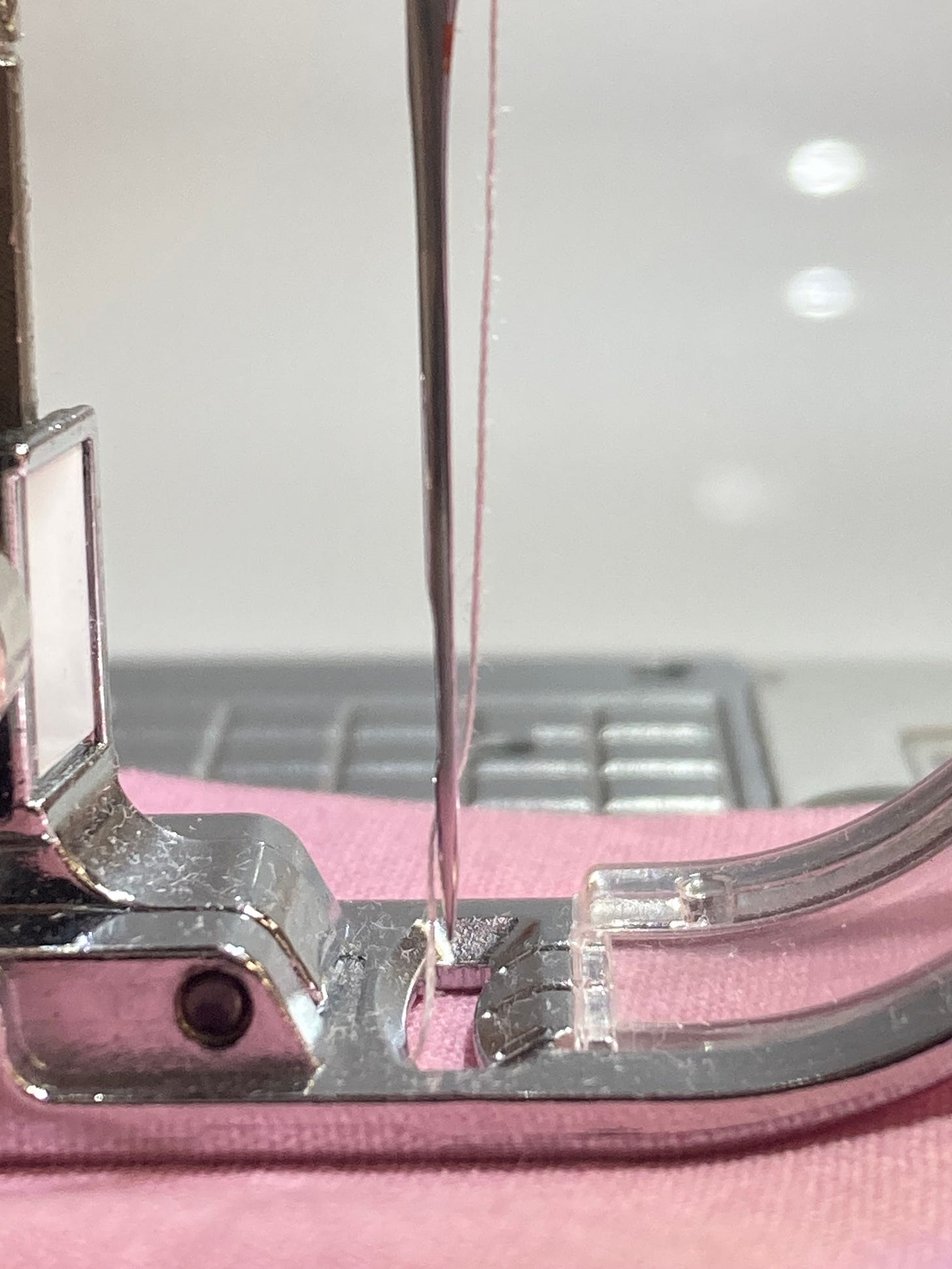
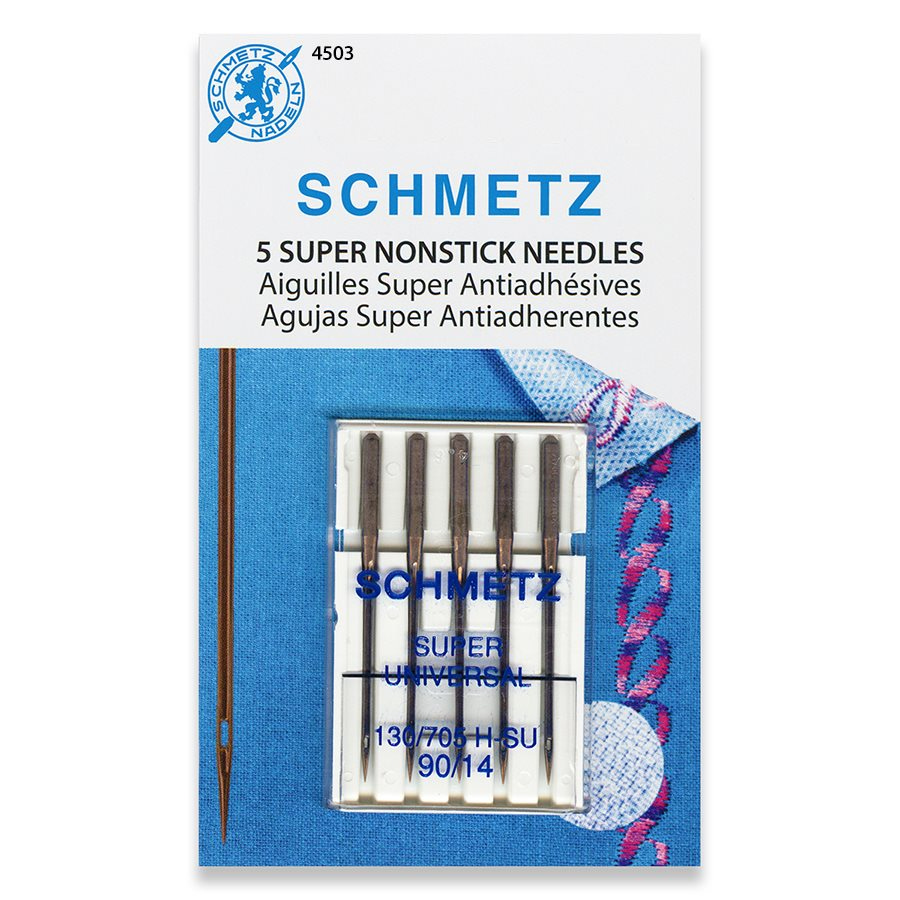
I do a lot of raw edge appliqué, which uses steam a seam lite double sided bonding material. Often there are multiple layers of fabric and fusible interfacing, and if you don’t fully heat-bond that interfacing, it can gum up the needle - even the super nonstick needles. I make sure to iron everything to the manufacturers specifications and when i quilt through the appliqué, I frequently check the needle for any stickiness or adhered lint. When I find it, I use a little isopropyl alcohol or needle lubricant to keep everything going smoothly. I also use 505 spray basting for most quilting; that’s a lot less problematic- maybe because I’m sparing with it. Thanks for the post!
Nice timing on the sticky article. (●'◡'●) I was working on a video this week testing all the different tapes that people torture their embroidery machines with. I'll be sure to mention your substack and skipped stitches.